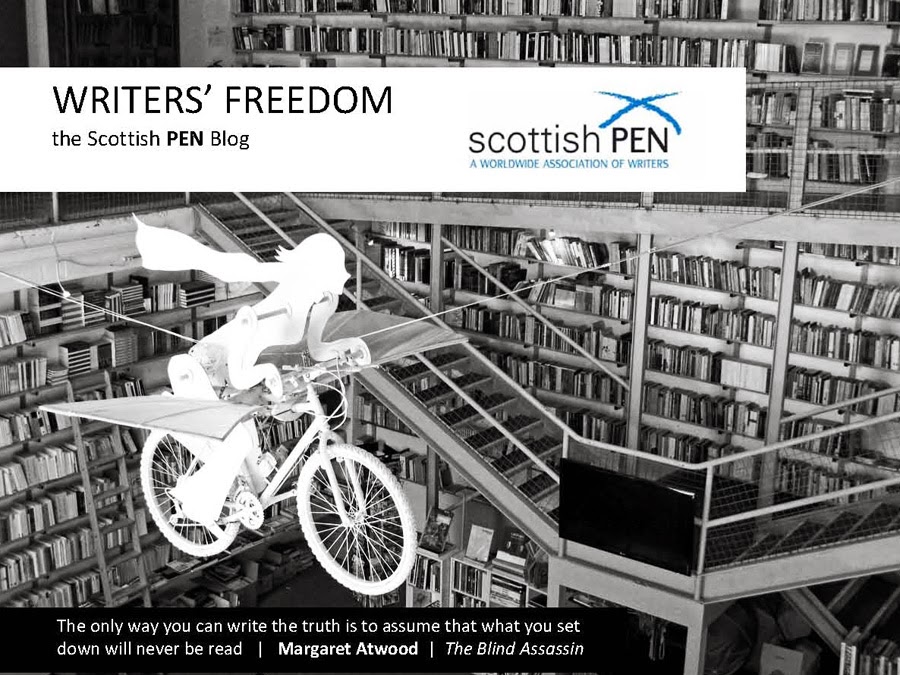Tom Hubbard
Special Delivery
You can stumble and tumble upon it while you’re engaged with everyday banalities. It’s the incident, small in itself, which can lead to a triumph of creativity. It happened to a provincial French postman, Ferdinand Cheval, during one of his rounds: he lost his footing against a stone which he then picked up and admired for its strange shape. He decided to take it home to his yard. Cheval – or “Facteur [postman] Cheval” as he’s best known - continued to collect more stones as he went about his business, and resolved to make a reality of a long-nurtured fantasy. In that open space by his home at Hauterives, south of Lyon, he would construct his Palais Idéal – his ideal palace – working on it for as long as it would take.
It took him over thirty years, from 1879 to 1912. It’s the oddest building you’re ever likely to visit in a lifetime, let alone within thirty-odd years. For some it has been an eyesore, the creation of a village crank. For André Malraux, the French minister of culture in 1969, it deserved the status of a national monument, as the world’s sole example of “architecture naïve”. Sole example? What about follies, such as Jack the Treacle-Eater in Somerset, or Scotland’s own outsized Pineapple at Airth near the Kincardine Bridges? When I lived in Leixlip, Ireland, I was within walking distance of Co. Kildare’s ziggurat, the “Wonderful Barn”, and there was a Gothick lodge and a circular temple in the ample grounds of nearby Castletown House. Most of these weird structures owe their existence to aristocratic or otherwise landed whimsy. Cheval’s was no dilettante production; it was a working-man’s quest for meaning, and if it could be described as “naïve” it achieved, paradoxically, the kind of sophistication that often eludes the consciously sophisticated.
Read French novels of the decades leading up to Cheval’s masterpiece, and you frequently encounter the stubborn provincial intent on conquering the capital. But Cheval had no knowledge of, or interest in, Paris. He was unaware of those great movements in art that we cluster together under the term post-impressionsm. Art nouveau? The Palais Idéal shares some of the features of that movement – the representation of organic growth, the plant and animal forms that seem to defy their objectively static condition. Symbolism? Again, there’s common territory – the hauntingly atmospheric nature of the building, both of its parts and of its whole: if, as Walter Pater maintained, all art aspires to the condition of music, Cheval’s Palais Idéal is “Symbolist” inasmuch as it is art aspiring to the condition of dream – except that the terms “Art nouveau” and “Symbolist” would have meant nothing to Cheval, and his case was rather that of dream aspiring to the condition of art.
The Palais Idéal is a meeting place of the various arts, a powerfully integrative vision. It is sculpture as well as architecture, again as regards its constituent parts as well as its totality – a diversity-in-unity. It is theatre: your approach to it from the village, even via its custom-built entry-point, reveals a spectacle in both the French and English meanings of that word. You reach the upper level of the Palais Idéal, by a choice of winding stairs, and find yourself on a terrace that suggests a stage – a stage that demands all France, and the world beyond, as its audience. It’s also literature, for Cheval had a predilection for mottoes, scraps of poetry, and his own gnomic pronouncements, all of which he inscribed on his walls, not least those of the vaguely unnerving “labyrinth” within the ground level of his eldritch castle.
Pour mon idée, mon corps a tout bravé,
Le temps, la critique, les années.
La vie est un rapide courrier,
Ma pensée vivra avec ce rocher.
In itself it lacks one art: music. Even here, though, help is at hand – at least in the summer months when open-air performances take place in front of the monument.
.jpg) |
| Palais Ideal - detail |
Two of the English-speaking world’s most eloquent writers in art, Robert Hughes and John Berger, have come here and paid homage. Hughes has written of “a palace of the unconscious” built by a “proud and certain man”. Freud and Jung may indeed be hovering in and out of the structure, as well as Marx: Berger resists psychologising the work, preferring to stress the dialectical energies of the peasant-workman’s interaction with his materials. (These materials, it should be added, are not only of stone – Cheval also collected and deployed shells, and sculpted with mortar: in his time he had worked as a baker, and kneading the dough proved itself to be a transferable skill.)
I suggested to the students in my aesthetics class at Grenoble that architecture was the one art you couldn’t escape: it was all around you. Moreover, rather than you containing it, it contained you. Music might enter your body; your body must inevitably enter a building. Berger rightly maintains that books and even films about the Palais Idéal can never be a substitute for actually being there and inside it: “You do not look at it any more than you look at a forest. You either enter it or you pass it by.” Nevertheless, as well as the books, I showed a DVD of it to my students: such a medium could reach the parts (of the building, and of human sensibility) that the best books couldn’t reach. The new technology could at least offer an appetiser for the original’s three-dimensionality; when I lectured on Cheval in my art college and evening class days, I had only slides to hand. Yet these images, for all their inadequacy, were what led me to explore this monument in all its existential palpability, this seemingly unlikely creation of the dour postman of Hauterives.
Below: photograph of “Le Facteur” Cheval.

.jpg)
.jpg)
